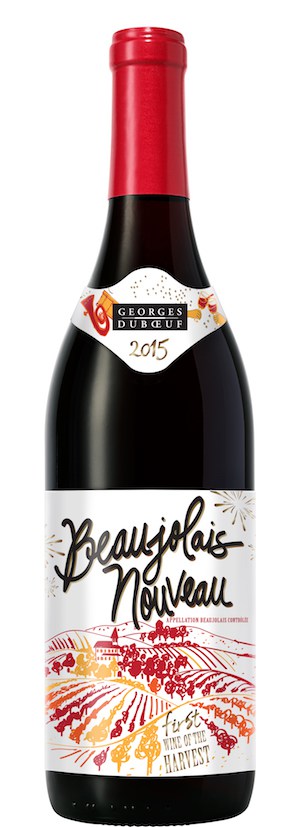Last Updated on July 22, 2024.
Gamay Grape Characteristics
Gamay is a black grape variety that typically produces dry and red fruit-forward red wine. It is most well known as being the signature grape variety grown within the Beaujolais region of France.
This grape variety is known to ripen early and produce high yields, thus it does quite well in both moderate and cool climate wine-growing regions.
Most moderate-climate Gamay is light-bodied, with elevated acidity and little to no tannin structure. This makes Gamay varietal wines exceptionally easy to drink, yet at the same time it makes them poor candidates for bottle aging. The majority of Gamay wines should be consumed as soon as possible in order to get the best flavor and freshness out of the bottle.
Crafting and Growing Gamay Wine
Gamay has been grown in a number of fashions since ancient Roman times around Central France. Today, winemaking processes have advanced to the point where we feel we’ve discovered how best to help Gamay reach its optimal flavor potential.

In important growing regions such as Beaujolais, soils consist of large concentrations of granite and schist, particularly in the northern part of the region, with limestone more common in the south. These soil types influence the growth and characteristics of the Gamay grape, which is naturally high in acidity. To balance this acidity and enhance the wine’s fruity profile, carbonic maceration and fermentation are often employed. This winemaking technique helps reduce the perception of acidity in the final product, resulting in wines that are vibrant and approachable.
To begin the process, grapes are hand-harvested to preserve the bunches and ensure that the skins are not broken, which occurs frequently with mechanized harvesting.
Whole grapes are then added to stainless steel or cement vats, where they are then sealed and pumped with additional carbon dioxide. Under the weight of gravity, the grapes at the bottom of the container are systematically crushed, releasing additional carbon dioxide and natural yeast. The remaining 2/3’s of the mixture ultimately ferments with little contact to the grape skins, ensuring that the final product has minimal tannic content (making it easier to drink). In addition, carbonic maceration helps ease the noticeability of the acidic side of the Gamay grape.
Worth noting is that a number of Beaujolais Crus have begun to implement more traditional Burgundian styles of winemaking in an effort to add more complexity to what is typically an easy-drinking, young red wine. Premium producers are now incorporating more oak aging which is helping to extend the life and flavor of these wines. At the same time, they’re becoming more reminiscent of Red Burgundy wines, which are typically made with Pinot Noir.
Gamay Wine Calories and Alcohol Content
As a red wine, Gamay is about as low as you can go in terms of calories. Your typical 5-ounce pour of Beaujolais Nouveau (Gamay) will run you about 114 calories, though this can vary by a 10 point margin. Slightly older and or oak-aged wines, or those made by Beaujolais Cru producers could be up to 130 calories per 5 ounce pour.
In terms of Gamay alcohol levels (otherwise known as ABV), you can typically expect between 10.5% — 12.5% ABV, though some New World winemaking practices may exceed this.
Learn About These Other Wine Grape Varieties
Written By Greig Santos-Buch
Greig Santos-Buch is a Co-Founder at Winetraveler.com and a WSET 2 Merit wine writer. He works with several brands focusing on experiential and immersive-style travel. In his spare time, you can find him hiking with a bottle of Cabernet Franc in his backpack or scuba diving trying to talk a reef shark into trying Swiss wine.
Additional images courtesy Wan Fiore Project and Tiny Farm House.
What Does Gamay Wine Taste Like?
Fruit
Red Fruit
Cherry, Red Currant, Raspberry, Cranberry
Earth & Mineral Notes
Underbrush, Light Black Pepper, Limestone, Schist
Additional Complexities
Floral, Dried Carnation, Cinnamon
Structure & Body
Body Light
Sugar Dry
Tannins Medium-Minus
Acid High
Alcohol Medium (10.5% - 13% ABV)
Finish Medium-Short
Swordfish Kabobs with Balsamic Glaze
Being the softly tannic and refreshingly acidic red that it is, Gamay based wine can be some of the easiest to pair with food. It is considered to be one of the "safe wines" by many wine professionals when it comes to food pairing. Think fatty fish such as salmon, arctic char and swordfish. Or, poultry such as turkey and chicken.